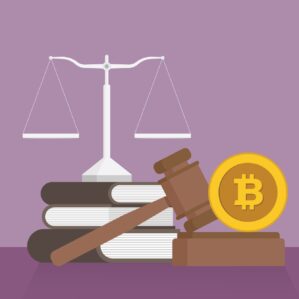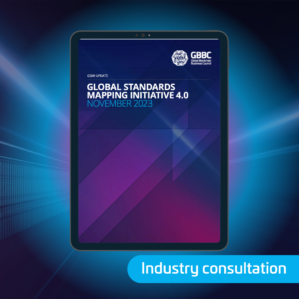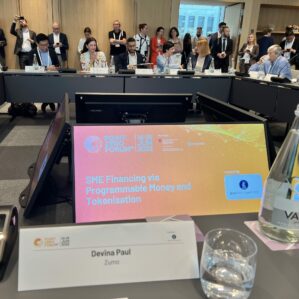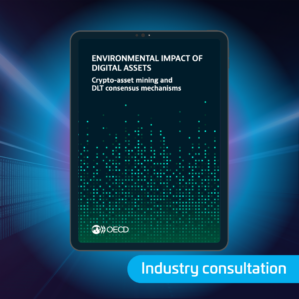
We appreciate the consultative spirit in which these proposals are put forward, and welcome the opportunity to feed in to the call for evidence by HM Treasury, Future Financial Services Regulatory Regime for Cryptoassets and help shape considered, proportionate guidelines to support the growth of the cryptoasset industry in the UK.
Preface general note
- We appreciate the consultative spirit in which these proposals are put forward, and welcome the opportunity to feed in to this consultation and help shape considered, proportionate guidelines to support the growth of the cryptoasset industry in the UK.
- Zumo has participated in both CryptoUK and GDF industry membership responses to this consultation, and is broadly supportive of the positions outlined in those combined returns.
- In this supplementary Zumo response, we deliberately restrict our comment to: considerations not encompassed within those reports; and/or areas and considerations closest to our business operations as a UK-headquartered and FCA registered cryptoasset firm (Zumo Financial Services).
Comments
- How can the administrative burdens of FSMA authorisation be mitigated for firms which are already MLR-registered and seeking to undertake regulated activities? Where is further clarity required, and what support should be available from UK authorities?
- We are supportive of the points put forward by the wider industry: the need for adequate transitional arrangements at each phase of added regulation; clear implementation timelines at the earliest possible stage; and due consideration of an applicant’s supervisory history in expediting applications and avoiding duplicative information requests.
- However, we would also emphasise the need to give proper time for operationalisation in preference to an overly ambitious timeline. Given that UK crypto businesses are currently occupied preparing to operationalise travel rule and financial promotions requirements, care should be taken with the pace at which extra obligations are layered on to the industry. Generating additional regulation too quickly risks putting undue pressure on governance frameworks and compliance operations during a challenging time for the industry as a whole; instead – and this goes against the calls for hasty action we heard from certain of the industry memberships – we would advocate for a clearly telegraphed, measured and staged approach that aids existing market players to adjust and ensure compliance in a sensible and controlled manner.
- Finally, given that the new proposed regime opens up multiple concurrent regulatory pathways, namely: (a) first-time authorisation for solely MLR-registered cryptoasset businesses (b) variance of permissions for existing authorised persons (c) direct authorisation application for entirely new entrants, care should be taken that the playing field is kept level and does not unduly favour or provide competitive advantage to one or the other application route (for instance, a variation of permissions over a first-time authorisation application by an MLR-registered business) except inasmuch as may be logically expedited by previous supervisory history.
- Is the delineation and interaction between the regime for fiat-backed stablecoins (phase 1) and the broader cryptoassets regime (phase 2) clear? If not, then please explain why.
- We would appreciate further clarification on this issue.
- From Zumo’s perspective as an exchange provider, trading activity – whether a stablecoin or another cryptoasset – necessitates custody. And indeed, this is the case for almost any centralised cryptoasset exchange. It is therefore hard to follow how the consultation paper is able to delay exchange and trading activities relating to stablecoins to phase 2, while retaining stablecoin custody in phase 1. Along a similar line of argument, the distinction between custody of a stablecoin and custody of any other cryptoasset is equally artificial from the exchange perspective – while the backing of both may differ, there is nothing operationally to separate them when looking at the issue at the point of trading and exchange.
- One potential interpretation we have come to is that the phase 1 custody rules are directed at stablecoin issuers (and not exchanges) and therefore that an exchange (where stablecoin custody is carried on for the sole purpose of trade and exchange) may delay its authorisation requirements to phase 2.
- In that spirit, an explicit clarification would be welcome that (a) exchanges, where providing custody solely for stablecoin trading, are not implicated in the phase 1 custody requirement (b) if not, an articulation of the justification for splitting the custody requirements between two phases. Otherwise, it is our position that an exchange provider might be inclined to hold the trading of stablecoins altogether until phase 2 simply to avoid being caught up in a two-phased custody authorisation process that makes little sense from the exchange perspective.
- A similar ambiguity exists with regard to the description of phase 1 stablecoin payments activities (though we understand this may be answered in forthcoming stablecoin consultation). Again from an exchange perspective, the question revolves around the definition here of ‘remittance’ and the extent to which an exchange would be implicated in phase 1 ‘payments activities’ based on services it offers. Our current understanding is that (a) if an exchange were to offer trading and exchange only (with no transfer capability) then it would not be implicated in the phase 1 payments activities (b) if it were to offer transfers between its users within the confines of its custodial platform, this would also not constitute a phase 1 payments activity (not counting as a payment or a remittance) (c) only if a send functionality external to the exchange were facilitated would there be a question of the phase 1 payments activity authorisation requirement being triggered as facilitating a remittance.
- We would greatly appreciate clarification in regard to these questions as the language referring to ‘remittance’ only appears in certain contexts (sometimes the reference is only to payments) and it is not presently clear to us to what extent an exchange is acting as a stablecoin payments services provider when providing which specific services. Speaking from an exchange perspective, we believe the ‘best case’ and the most conducive to the interests of customer functionality would be to avoid triggering stablecoin authorisation requirements for exchanges entirely when facilitating remittance, and instead focus authorisation on stablecoin issuers and dedicated stablecoin payment service providers. This is particularly the case given that simple tracking of asset flows – the remittance part – is likely to be well covered by travel rule arrangements and there doesn’t intuitively seem to be much to be gained by treating an exchange as a payments service provider only for a narrow subset of cryptoasset.
- Do you agree with the proposed territorial scope of the regime? If not, then please explain why and what alternative you would suggest.
- We agree with the push to tighten up territorial scope and therefore address some of the ‘offshoring’ issues that allow providers from abroad to have an unfair advantage over UK-headquartered businesses that are doing everything in their capacity to be and remain compliant (though questions likely remain as to how this is to be practically enforced).
- From a commercial perspective, we consider it important that, given the scope and compliance burden of the proposed UK regulatory framework, there are equivalence arrangements in place with other jurisdictions (negotiated in advance) that allow UK-regulated businesses to passport abroad based on meeting robust UK requirements.
- We consider this vital to give existing UK-headquartered businesses the operating conditions they require to expand internationally and represent the UK cryptoasset industry abroad, as well as being the necessary carrot to the stick to encourage businesses to set up shop in the UK in the first place.
- While we note that the consultation paper references equivalence arrangements being sought to enable UK operations by overseas-based firms based on regulation in an equivalent third-party jurisdiction, we would welcome clarification that this also works the other way round, and to which specific jurisdictions this might apply.
- Do you agree with the proposal for trading venues to be responsible for defining the detailed content requirements for admission and disclosure documents, as well as performing due diligence on the entity admitting the cryptoasset? If not, then what alternative would you suggest?
- We broadly agree with the industry membership position that there should be a standardised template prepared for this, perhaps by the FCA, with consultation of industry at the point of preparation.
- More generally, we highlight the need to think of disclosures in connection with consumer safeguarding measures: information and protection.
- Finally, while this is not a point relevant to our own operations, we observe that the admission process (and overall framework) as it is currently proposed is likely to encourage conservatism and favour older, more established assets and enterprises over newer or newly launched ones, simply by dint of time in market. From an innovation standpoint, it would be useful to consider the early-stage exemptions, safe harbours or sandboxes that could encourage the creation, development and access to capital of a new project (while retaining investor choice and access to assets) as opposed to a framework that to some extent ‘raises the drawbridge’, picks winners and losers based on regulatory determinations, and exposes new business to a different set of operating realities than the incumbents who benefitted from a different environment in earlier times. This includes ‘DeFi’ projects that require time to achieve decentralisation properties.
- Do you agree with HM Treasury’s proposed approach to use the MiFID derived rules applying to existing regulated activities as the basis of a regime for cryptoasset intermediation activities?
- On a general note, we would like to draw attention to the increasing prominence within the cryptoasset industry of ‘infrastructure’ business models, where businesses may provide cryptoasset services to other businesses ‘as-a-service’. A common example of this is custody, where a ‘sub-custodian’ may provide the backend custody infrastructure to allow a front-end custodian business client to provide custody-facilitated services to its end customers.
- As existing businesses and institutions with established brands and customer bases begin to draw more and more on the infrastructure and expertise of dedicated digital asset infrastructure providers (of which Zumo is one) in order to provide value added cryptoasset services, we consider it critical that the regulatory pathways to compliantly offering such services remain as clear and streamlined as possible.
- Importantly, given that we judge that traditional integrator businesses are unlikely (in most cases) to have the in-house expertise or inclination to pursue cryptoasset authorisations in their own right, this includes models where the cryptoasset infrastructure provider is also able to assume related regulatory and compliance obligations for the cryptoasset component of the infrastructure service provided.
- Currently, there are ‘introducer’ style models that can be applied to this kind of activity, but as the regime develops we would welcome clarification on the continuing regulatory pathways available as we believe clarity in this area to be key to encouraging integrated solutions and commercial value in the widest possible format.
- Do you have views on the key elements of the proposed cryptoassets custody regime, including prudential, conduct and operational resilience requirements?
- We support CryptoUK’s articulation of the need to legally segregate customer holdings (in omnibus) and apply FSCS protection rules to cryptoassets (referencing our point above on the need for both consumer information and consumer protection).
- This position comes from a perspective of balancing benefits and obligations. Current proposals are based on the premise of bringing digital assets to the same level of compliance obligation as any other area of financial services. Extending the same logic, this should come with the benefit of the same levels of consumer protection, including with regard to FSCS.
- What is to be avoided is an ‘all stick no carrot’ approach that leaves the industry with burden while bringing it no marketable benefits, as this will not incentivise the development of business in the UK over other jurisdictions.
- Does the proposed approach place an appropriate and proportionate level of responsibility on trading venues in addressing abusive behaviour?
- We agree with the need for trading venues to monitor activity within the confines of their own platform. We do not agree with the sharing of trading information among venues, which we consider impractical and uncommercial in logistics, compliance burden and data protection.
- We consider that any monitoring of the wider market is the responsibility of the FCA, and we would propose a model whereby individual exchanges flag agreed standardised anomalies or alerts to the FCA for it to action as it sees fit based on its own assessment. Over time, alternative regtech solutions may also exist that may provide opportunity for market participants to collaborate at industry level.
- We also note that market abuse may commonly come from elements outside of trading venues’ influence, for instance the inside information known only by the independent project teams behind listed assets, the non-transparent communications of social media influencers, as well as manipulations that cross over to the DeFi ecosystem.
- When making investment decisions in cryptoassets, what information regarding environmental impact and / or energy intensity would investors find most useful for their decisions?
- We consider that the following information would be useful/appropriate:
- For the given cryptoasset, a breakdown of the material environmental considerations, their assessed impact and the methodology applied in doing so. In the case of digital assets, this is almost wholly a question of electricity consumption (with minor and harder to quantify externalities such as hardware waste) and our position is that this should therefore form the primary focus of such disclosures. Also because of this, we consider it important that electricity consumption figures are accompanied with an estimation of renewables share and progression in renewables share: somewhat like an electric vehicle, the immediate environmental impact of a digital asset is as big or as small as the cleanliness of the electricity generation that powers it, and this should form a key metric for investor assessments of environmental impact. In all cases, figures may differ significantly depending on the methodology applied, and therefore it is important that data sources and calculation methodologies are clearly disclosed, together with the reason for choosing the specific methodology applied. Where the variance is materially significant (as in the case, for example, of contrasting assessments of Bitcoin renewable share), it may be necessary to disclose or aggregate multiple sources, with clear reasoning provided for choosing any preferred methodology over another.
- Second, delineated disclosures according to the role the specific preparer of the disclosure plays in the ecosystem. Given the decentralised nature of leading cryptoassets, there is a distinction in control and capacity for influence between the miners/validators who directly participate in the cryptoasset consensus mechanism (and therefore have control of energy inputs) and the investment/service providers who offer assets to customers without having a direct say in the operation of the respective networks. This needs to be made clear to investors, and the nature of disclosures may differ accordingly, in line with the information and tools available to the preparer of the disclosure. For example, a Bitcoin mining operator has direct access to their own electricity records and an ability to direct the source of their energy. An end investment provider has no such direct information or influence. And in both cases, there is no centrally verifiable record of the exact energy mix of every miner around the world or a globally coordinated capacity to influence this at network level. Disclosures must be sensitive to and communicate such limitations.
- Third, clear information about the measures, if any, the preparer of the disclosure is taking to mitigate the environmental impact as assessed with regards to its own holdings or operations. This recognises that while an individual entity has no say over, say, the overall Bitcoin network, it is able to calculate environmental impact for its own slice of network usage, or for individual investors based on the size of their individual holdings. This is a rapidly evolving area in terms of providers offering more environmentally conscious digital asset solutions and we consider it would be important for investors to know whether the provider they are considering is taking any action of this type. Emerging mechanisms (and that used by Zumo) include renewable energy certificates (RECs) procured for an amount of electricity equivalent to that calculated for the investor’s/entity’s specific holdings. Zumo has been supported in developing this type of solution by Innovate UK, and we consider this is an area of significant potential and innovation for the UK cryptoasset industry.
- What reliable indicators are useful and / or available to estimate the environmental impact of cryptoassets or the consensus mechanism which they rely on (e.g. energy usage and / or associated emission metrics, or other disclosures)?
- What methodologies could be used to calculate these indicators (on a unit-by-unit or holdings basis)? Are any reliable proxies available?
- Combined response to questions 48 and 49:
- This is an area Zumo has contributed to for some years, approaching the problem from the perspective of an exchange/investment provider and with a first focus on Bitcoin as the area of most urgent need for attention.
- For Bitcoin, there are multiple calculation methodologies commonly referenced in the discussion, including mining-based, network share-based and hybrid techniques. These draw on the open source Cambridge Bitcoin Electricity Consumption Index for their source data. An overview and further contextualisation can be found in Zumo’s decarbonising crypto reports.
- These calculations can subsequently be used to inform the market-based procurement of RECs corresponding to the amount of electricity attributable to a given Bitcoin holding / activity. The current approach we employ at Zumo is the hybrid methodology proposed by South Pole and the Crypto Carbon Ratings Institute that weights platform transaction fees and value of holdings as a proportion of total network value. Geared towards platform providers, this allows for an estimation of electricity usage on a per-holding basis.
- This work has fed into wider guidelines within the industry that encompass other participants such as miners and therefore also other applicable accounting methods such as location-based and consequential (marginal) accounting. Valuable summaries are contained in the Crypto Climate Accord’s Guidance for accounting and reporting electricity use and carbon emissions from cryptocurrency and the World Economic Forum’s Guidelines for improving blockchain’s environmental, social and economic impact.
50, How interoperable would such indicators be with other recognised sustainability disclosure standards?
- The market-based REC procurement methods described above are derived from recognised accounting standards under the GHG Protocol.
- While reports such as that from the WEF as referenced above have begun to consider the issue in alignment with the broader ICT industry, we consider that there are a variety of factors that are distinct to the cryptoasset industry (as outlined in response to consultation Q47) and therefore care should be taken in how sustainability disclosure standards are applied, bearing in mind the characteristics of the digital asset sector.
- At what point in the investor journey and in what form, would environmental impact and / or energy intensity disclosures be most useful for investors?
- We consider that disclosures would be most useful to investors as part of the information materials disclosed to them prior to investment.
Critically, we would argue strongly against separating environmental disclosures from other disclosure material and propose that such disclosures would most logically sit together with the rest of a cryptoasset’s admission and disclosure documentation as proposed in consultation Q15. Contrary to recent popular accounts, it remains our view that comparing cryptoassets (and consensus mechanisms such as proof-of-work or proof-of-stake) like-for-like purely on the metric of energy intensity cannot provide investors with the contextual information they require regarding surrounding design trade-offs with regard to decentralisation, resilience, immutability, network governance and operational history. Accordingly, we believe cryptoasset sustainability disclosures will be most valuable where they are considered holistically as part of the entire investment profile of a given cryptoasset, and provide the environmental contextualisations that allow investors to make informed decisions.





















